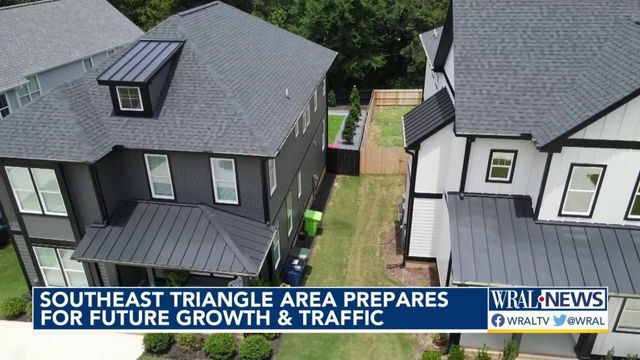Triangle leaders launch study to get ahead of rapid growth
The Triangle's growth is creeping across the Wake County line into neighboring Johnston County.
Posted — UpdatedThe Triangle’s growth is quickly creeping across the Wake County line into neighboring Johnston County. The town of Clayton has between 7,000 and 10,000 residential units either approved or under construction.
Since 2017, area leaders said about 20,000 people have moved to Johnston County and the southeast part of Wake County, which includes the town of Garner. It's 10,000 more people than leaders had projected five years ago.
“It’s nonstop, I guess, is probably the best way to explain it,” said town of Clayton Planning Director Benjamin Howell.
Town leaders said there are another 3,000 to 5,000 residential units in development.
“A lot of it’s probably the traffic and the concern with the amount of traffic on our roadways and the congestion that causes,” Howell said.
“The more connections you can make so everyone’s not having to take the same road, that helps,” said CAMPO Deputy Director Shelby Powell. “If you can get people into a bus or onto a greenway facility for their commute, that helps take some traffic off.”
Traffic has increased by as much as 50% in part of the study area since 2005. It's expected to jump 200% by 2050.
“What we’re hoping to do is shape some of the regional thinking around how that growth occurs and how that growth can be set up in a way that doesn’t overburden our transportation network,” Powell said.
The study will look at roads to widen and new ones to build. It will also plan new bicycle and pedestrian routes and public transit to encourage people to rethink their commutes.
“We can try to get back ahead of some of the growth that we need to,” Howell said.
The study will take about one year to complete. Planners told WRAL News there will be plenty of opportunities for people who live and work in this part of the Triangle to get involved over the next few months.
Related Topics
• Credits
Copyright 2024 by Capitol Broadcasting Company. All rights reserved. This material may not be published, broadcast, rewritten or redistributed.






